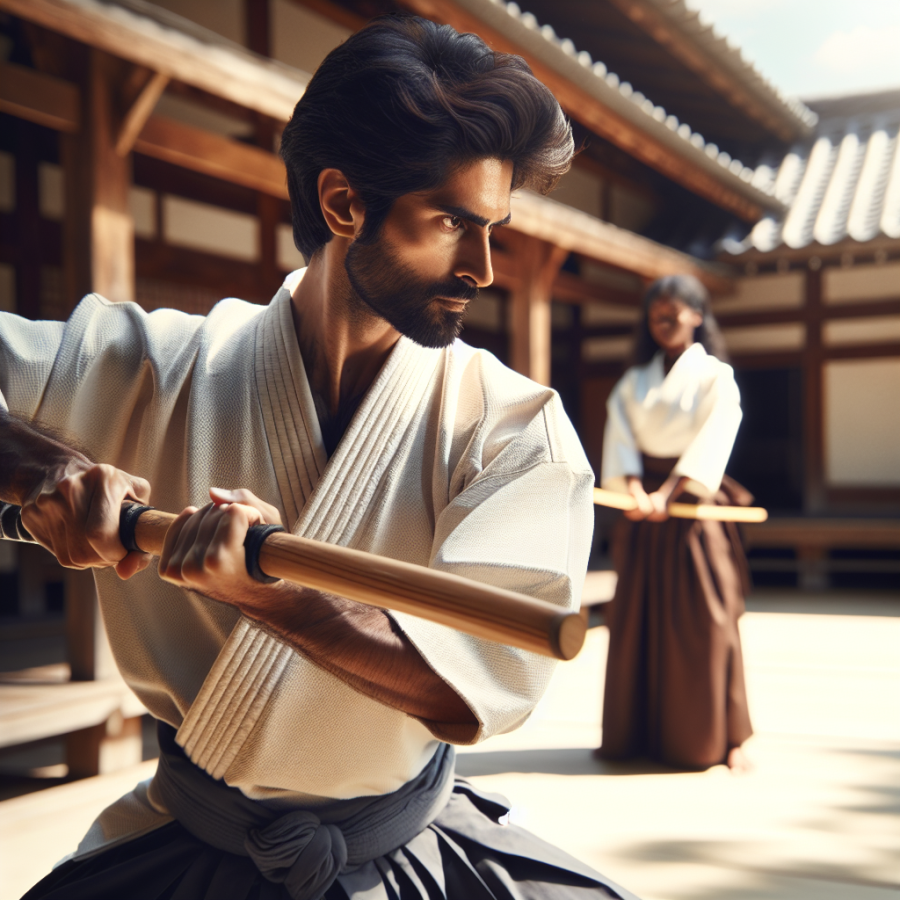The Path to Sword Mastery: Training Routines and Kenjutsu Kata Deep Dive
In the pursuit of sword mastery, particularly within the venerable discipline of Kenjutsu, practitioners must engage in rigorous training routines that sharpen not only their physical skills but also their mental acuity. Fundamental to the Kenjutsu curriculum are the Kata, which are choreographed patterns of movement that lay the foundation for mastering the sword.
Training Routines:
Kenjutsu training routines are comprehensive and require dedication and discipline. A typical session involves several components aimed at developing different skills necessary for proficiency in the art.
1. Suburi (Basic Sword Swinging): This is the aspect where students begin by learning how to handle the sword, focusing on grip, posture, and basic swinging techniques. These repetitive motions build muscle memory, strength, and control.
2. Footwork Drills: Proper footwork is crucial for balance and movement in Kenjutsu. Students practice advancing, retreating, and side-stepping maneuvers that allow for fluid motion during combat while maintaining stability.
3. Pair Work: This involves practicing with a partner to simulate real combat scenarios. It begins with controlled exercises known as Yakusoku Keiko (pre-arranged drills), where attacks and defenses are choreographed, enabling practitioners to better understand timing and distance.
4. Kata Practice: Once students have a fundamental understanding of basic moves and footwork, they progress to Kata practice, where they learn the formalized sequences that represent hypothetical fights.
Kenjutsu Kata Deep Dive:
Kenjutsu Kata are the heart of the practice, encapsulating the strategies and historic techniques of samurai swordsmanship. Each Kata represents a specific combat principle or tactic and contains within it a series of offensive and defensive movements designed to teach the Kenjutsu student about timing, body positioning, and the flow of a confrontation.
1. Learning the Kata: The initial step is to memorize the sequence of moves. This is often done slowly, step-by-step, under the watchful eye of a sensei. Precision is key, and each movement must be perfected before moving on.
2. Understanding Bunkai: Bunkai is the analysis and understanding of the practical application of each movement within a Kata. Knowing not just how to perform the movements but why they are done is imperative to mastering the Kata.
3. Solo Practice: Practitioners repeat the Kata individually, refining their technique and trying to embody the essence of each movement.
Read also:
The Rising Popularity of Soccer: An Endless Journey?
Embracing the Samurai Spirit: Techniques and Philosophy of Kenjutsu
Kenjutsu, the classical Japanese martial art of swordsmanship, has intrigued and inspired practitioners and enthusiasts for centuries. At its core, Kenjutsu is not just a set of techniques for wielding a sword. It encompasses a deep philosophy influenced by the Bushido—the way of the warrior.
One of the most important aspects of Kenjutsu is the development of the samurai spirit, which emphasizes virtues such as honor, discipline, and focus. To truly embrace the samurai spirit, practitioners must delve into both the techniques and the underlying philosophical teachings that form the backbone of this martial art.
Technique is the first aspect necessary for mastering Kenjutsu. This begins with the proper handling of the katana, the iconic Japanese sword. Students learn to draw the sword (nukitsuke) and execute cuts with precision and power. The study of forms (kata) helps in understanding the dynamics and flow of combat moves, teaching students how to move their bodies in harmony with the sword.
Control and balance are crucial when performing Kenjutsu techniques. Feet positioning (ashi-sabaki), body alignment, and the ability to foresee the opponent's moves are essential skills. Strikes and parries must be executed with utmost precision and timing, a concept known as 'maai', which refers to the engagement distance between opponents, and understanding this spatial relationship is pivotal in Kenjutsu.
Furthermore, practitioners must strive to synchronize their spirit (ki) with their physical movements. This internal power is harnessed through proper breathing and concentration, allowing for movements that are both fluid and swift. Mastery of Kenjutsu requires not only physical strength and technical skill but also a serene and focused mind.
The philosophy underpinning Kenjutsu teaches about the transient nature of life and the importance of living with integrity and respect. The samurai spirit involves embracing courage, loyalty, and righteousness. Practitioners often meditate on these values to internalize them, which in turn influences their approach to training and combat.
Swordsmanship lessons extend beyond the dojo. The discipline demanded by Kenjutsu influences personal and professional aspects of life. Practitioners learn to approach challenges with a level-headed demeanor, to stay calm under pressure, and to make decisions with clarity and decisiveness—all traits associated with the legendary samurai warriors of feudal Japan.




